The time signature 5/4 is an unusual, but popular meter in classical music and it has been used many times in popular music too. 5/4 contains measures (or bars) that have 5 quarter-note beats. Music in 5/4 time has an irregular count and can be thought of as a ‘2 then 3 count’ or a ‘3 then 2 count’.
We’re going to dive straight into 5/4 time, but you can find more info on what a time signature is in our complete guide to meters.
What is Time Signature 5/4?
The time signature or meter 5/4 is shown in the music as a 5 above a 4.

This comes before the music starts but after the clef and key signature. The ‘5’ stands for 5 beats per measure and the ‘4’ tells us that each beat is a quarter note. This means that the notes in each measure will add up to five quarter notes.
See if you can spot the five quarter-note beats in this line of music.

Now here it is with the beats labelled.

5/4 is a Complex Time Signature
There are three broad types of time signature: simple, compound and complex. Simple time signatures have strong beats that divide into two. Compound time signatures have strong beats that divide into three and complex time signatures have a mixture of beats.
In the time signature 5/4, the quarter notes are grouped into two strong beats. As there are five in total, they have to be grouped as a 2 and a 3. This makes 5/4 a complex meter as the two strong beats are not equal.
To learn more about these type of meters check out our guide to irregular (complex) meters.
As we have a group of 2 and a group of 3, we could arrange these in two ways
- The 2 then the 3. Counted as 1…&…2…&…a
- The 3 then the 2. Counted as 1…&…a…2…&
The image below shows how the strong beats in 5/4 can be arrange in two different ways.
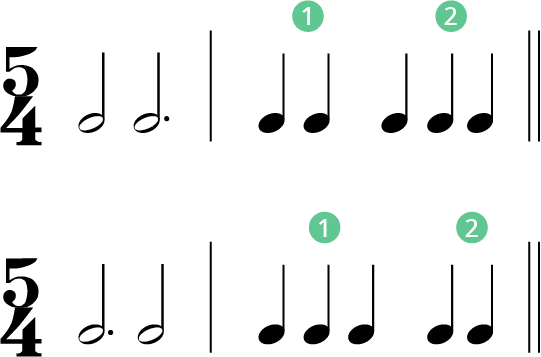
It is worth remembering that a piece of music will usual stick to one version of 5/4 for the whole piece. However this is a convention and not a strict rule.
How to count in 5/4
Time signature 5/4, like all meters, has a distinctive feel to it. As mentioned above, we can count 5/4 in two different ways depending on how the strong beats are ordered. The short piece below contains more complex rhythms with a variety of note lengths, but they would still be counted in the same way. Can you spot where each beat falls?
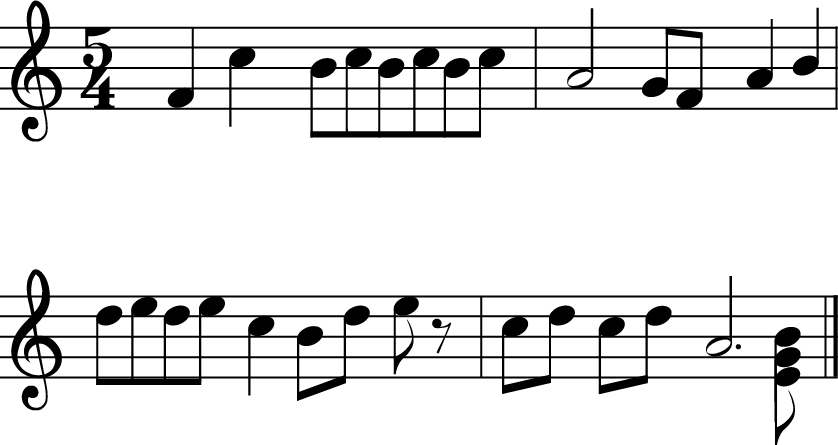
Now here it is with the beats added. The eighth notes in the 1st measure and half note in the 2nd lets you know that it is a 2 then 3 count.
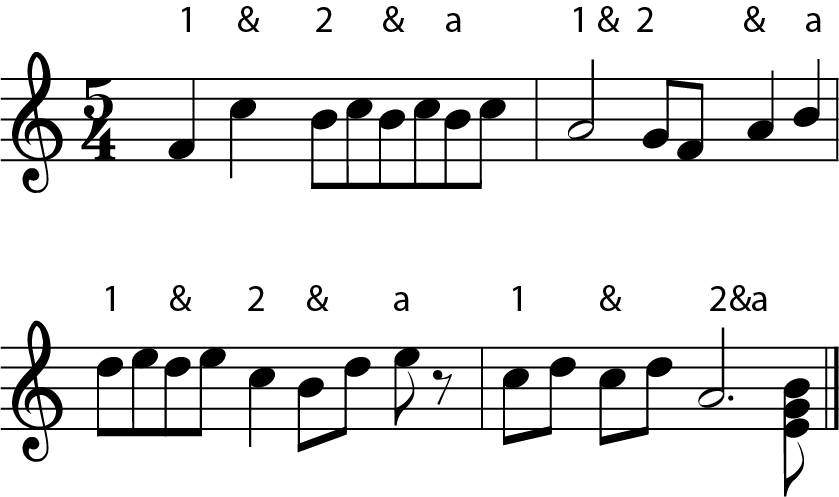
Songs in time signature 5/4
Radiohead – 15 Step
Queens of the Stone Age – Hangin’ Tree
Lalo Schifrin – Mission Impossible
Hozier – From Eden
Ear Training and Meters
To develop as a musician you’ll want to be able to recognise time signatures by ear. This is where ear training comes in, as the more you practice, the better your’ll get.
My recommendation for this is Tonegym as they have a comprehensive and fun program for training your ears. It’s what has gotten the best results with for my own students.
They have a great game called ‘Rhythmania’, were you have to read rhythms in different meters and tap them back using the spacebar. I like how Tonegym structure the game so it always gives you the right level of challenge.
For an in-depth look at ear training, here’s my full review of Tonegym.
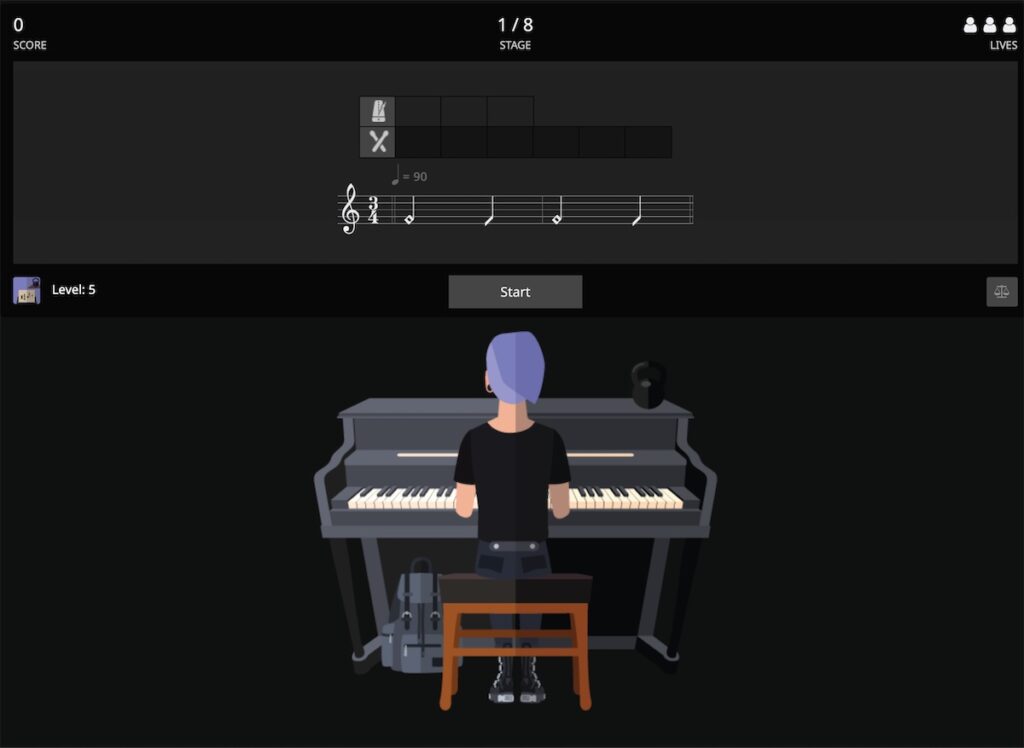
Alternating 2/4 and 3/4 Meters
Time signature 5/4 has a group of two quarter notes and a group of 3 quarter notes in each measure. Essentially, we could rewrite this as a measure of 2/4 followed by a measure of 3/4 (or the other ways around). This would give the same rhythmic effect as writing the piece in 5/4, but would be challenging for musicians to read.
The below image shows how a measure of 5/4 can be rewritten as a measure of 2/4 followed by 3/4.
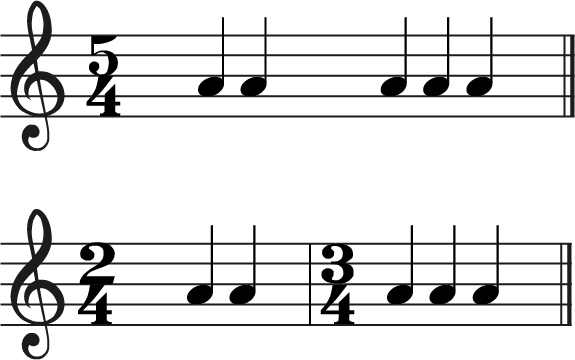
What next…?
If you want to learn more about time signatures, check out our complete guide to meters.
